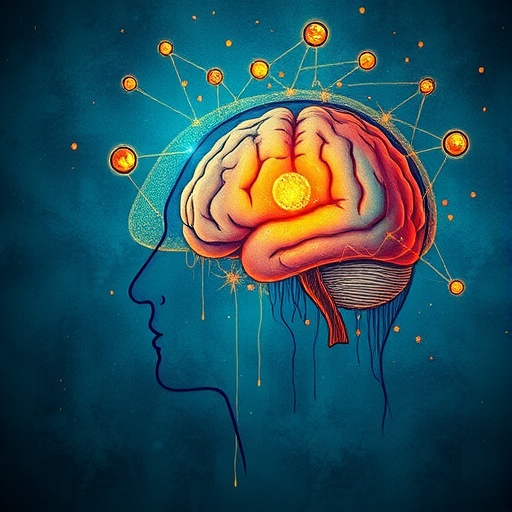In an era increasingly defined by the complexities of modern education, the phenomenon of mind wandering has garnered attention for its profound implications on self-regulated learning. As educational paradigms shift towards more individualized learning experiences, understanding the cognitive mechanisms that underlie attentional lapses becomes paramount. Researchers have embarked on a systematic exploration, as elucidated by Bühler, Fütterer, and von Keyserlingk, who map mind wandering to the multifaceted processes of self-regulated learning. Their study, slated for publication in the prestigious journal Educational Psychology Review, presents a cohesive framework harnessed from multimodal data, shedding light on how our thoughts can drift from the task at hand even in highly structured learning environments.
At the core of the inquiry is the recognition of mind wandering as not merely a distraction but a cognitive state with rich implications for the learning process. Traditional views often regard mind wandering in a negative light; however, recent studies have begun to suggest that it can serve adaptive functions. For instance, wandering thoughts can facilitate problem-solving, foster creativity, and encourage future planning. As educators strive to cultivate self-regulated learners capable of navigating their educational journeys autonomously, understanding the dual nature of mind wandering becomes essential.
Bühler et al. meticulously dissect the ways in which mind wandering is intertwined with self-regulation. They provide a multidimensional analysis grid that encompasses various aspects of this cognitive excursion, including the triggers, contents, and outcomes of mind wandering episodes. Essential to this discussion is the role of metacognition—the awareness and control over one’s cognitive processes. The researchers argue that engaging with one’s own mind wandering can enhance metacognitive skills, ultimately leading to more effective self-regulated learning strategies.
The study employs a comprehensive systematic review of existing literature, synthesizing findings from diverse educational contexts. By analyzing data from different modalities—such as neuroimaging, behavioral assessments, and self-reports—the researchers uncover a tapestry of insights into how learners’ minds drift during educational tasks. This multifaceted approach not only bolsters the validity of their findings but also illuminates the nuanced interplay between cognitive, emotional, and contextual factors that shape mind wandering experiences.
Importantly, the findings challenge conventional wisdom that seeks to eliminate mind wandering from learning environments. Instead, Bühler et al. advocate for a balanced approach that recognizes the necessity of allowing some cognitive freedom during structured activities. Their analysis suggests that well-timed moments of mind wandering could serve as a breathing space for learners, encouraging deeper reflection and a richer understanding of the material.
A noteworthy aspect of the research focuses on technological integration—specifically, how digital tools can support self-regulated learning and mind wandering alike. The advent of educational technology has the potential to create spaces for students to explore their thoughts freely, ultimately enhancing their engagement and intrinsic motivation. The findings underscore the importance of designing learning environments that do not merely restrict distractions but rather allow for constructive wandering, thus enriching the educational experience.
Furthermore, the implications extend beyond individual learners to encompass educational policy and curriculum design. Educators, administrators, and policymakers must recognize the value of fostering environments that support mental flexibility. By embracing the complexities of mind wandering, educational institutions can move towards practices that nurture innovative thinking, critical analysis, and adaptive learning methodologies.
As educational researchers and practitioners reflect on the findings presented by Bühler and colleagues, a paradigm shift is on the horizon. The intersection of mind wandering and self-regulated learning not only opens new avenues for inquiry but also calls into question long-held beliefs about focus and productivity in academic settings. It encourages a reevaluation of how students are encouraged to engage with their cognitive processes, paving the way for more holistic educational practices.
Moreover, as this research garners more attention, it paves the way for future studies to explore the boundaries of mind wandering further. Are there specific strategies educators can employ to cultivate an environment that fosters beneficial mind wandering? What are the individual differences that influence mind wandering and its relationship with self-regulation? As these questions arise, they emphasize the need for ongoing investigation.
In conclusion, the study spearheaded by Bühler et al. offers a refreshing perspective on mind wandering within the context of self-regulated learning. By mapping this cognitive phenomenon to well-established educational frameworks, the researchers highlight the intricacies of the learning process. They advocate for a reframing of mind wandering as a critical component in fostering self-regulated learners. In doing so, they prompt educators and stakeholders to rethink traditional pedagogical approaches, ultimately aspiring to cultivate enriched learning environments for all students.
The insights from this comprehensive review promise to inspire educators and researchers alike, urging them to delve deeper into the cognitive dimensions of learning and to embrace the complexity of the human mind as a valuable ally in the educational process. As the narrative of education continues to evolve, understanding the role of mind wandering will undoubtedly pose exciting possibilities for future learning paradigms.
The fusion of rigorous academic research and practical implications makes this study a pivotal contribution to our understanding of education’s nuances. As educators strive to optimize learning experiences, the integration of mind wandering into the fabric of instructional design may open new doors to enhanced academic engagement and achievement. With this groundbreaking work, Bühler, Fütterer, and von Keyserlingk command attention in the academic community, poised to influence the future trajectory of educational psychology.
Subject of Research: Mind Wandering and Self-Regulated Learning
Article Title: Mapping Mind Wandering to the “Self-Regulated Learning Process, Multimodal Data, and Analysis Grid”: A Systematic Review
Article References:
Bühler, B., Fütterer, T., von Keyserlingk, L. et al. Mapping Mind Wandering to the “Self-Regulated Learning Process, Multimodal Data, and Analysis Grid”: A Systematic Review.
Educ Psychol Rev 37, 76 (2025). https://doi.org/10.1007/s10648-025-10041-3
Image Credits: AI Generated
DOI:
Keywords: Mind Wandering, Self-Regulated Learning, Educational Psychology, Metacognition, Multimodal Data




